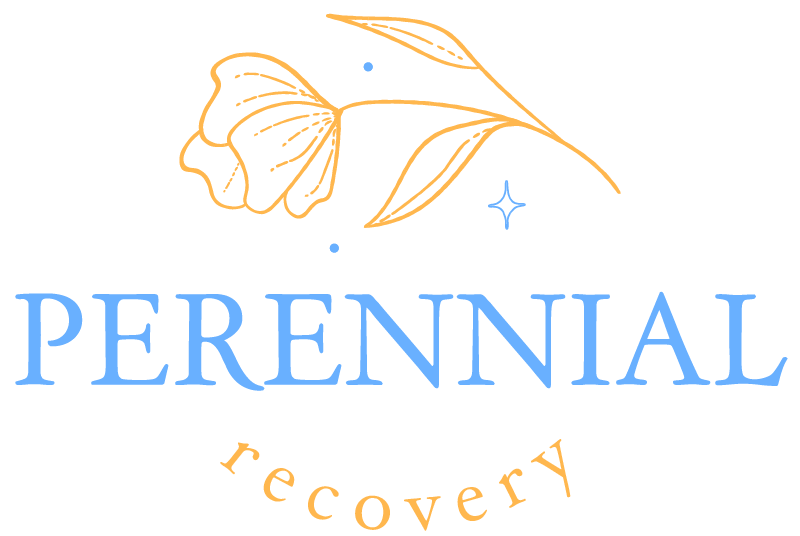Substance Use Among College Students
Substance use among college students is a prevalent issue that has garnered attention due to its potential impact on academic performance, personal well-being, and overall campus culture. It is important to understand the dynamics of substance use in college settings in order to address the concerns effectively.

Introduction to Substance Use in College Settings
College campuses often serve as a unique environment where young adults are exposed to new experiences and opportunities. This transitional phase can create a higher susceptibility to substance use. Students may experiment with substances as a means of socializing, coping with stress, or seeking new experiences. It is crucial to recognize that not all college students engage in substance use, but it remains a significant concern that requires attention.
Impact and Concerns
Substance use among college students can have far-reaching consequences. It can negatively impact academic performance, social relationships, physical and mental health, and overall campus safety. Some of the concerns associated with substance use include:
- Academic Impairment: Substance use can hinder concentration, memory, and cognitive abilities, ultimately affecting academic performance and jeopardizing future goals.
- Health Risks: Excessive and prolonged substance use can lead to physical and mental health issues, including addiction, impaired judgment, risky behaviors, and increased vulnerability to accidents.
- Campus Safety: Substance use can contribute to reckless behaviors, increasing the risk of accidents, violence, and sexual assault on college campuses.
- Social Consequences: Substance use can strain relationships, isolate individuals, and hinder personal and social development.
- Legal Ramifications: Engaging in illicit drug use or underage drinking can result in legal consequences, potentially impacting future opportunities and career prospects.
Understanding the impact and concerns surrounding substance use among college students is essential for developing effective prevention, intervention, and support strategies. By addressing these issues proactively, colleges can foster a healthier and safer environment for their students.
Common Substances Used
When discussing substance use among college students, it is important to recognize the various substances that are commonly used in college settings. These substances can range from legal and socially accepted substances to illicit drugs. Below are some of the most commonly used substances among college students:
Alcohol
Alcohol is the most widely used substance among college students. It is easily accessible and often considered a part of the college social scene. However, excessive alcohol consumption can lead to a range of negative consequences, including impaired judgment, academic difficulties, and health risks.
Marijuana
Marijuana, also known as cannabis or weed, is another substance commonly used by college students. The perception of marijuana has shifted over the years, with some states legalizing its recreational use. However, it is important to note that marijuana use can still have negative effects on academic performance, memory, and overall well-being.
Prescription Drugs
Prescription drugs, such as stimulants, sedatives, and opioids, are also prevalent among college students. These medications are often misused for non-medical purposes, such as enhancing focus or getting high. The misuse of prescription drugs can have serious health risks and legal consequences.
Stimulants
Stimulants, such as amphetamines and cocaine, are sometimes used by college students to enhance alertness, focus, and energy levels. These substances can have significant health risks, including addiction, cardiovascular problems, and mental health issues.
Hallucinogens
While less common than alcohol, marijuana, and prescription drugs, hallucinogens like LSD (lysergic acid diethylamide) and psilocybin mushrooms are still used by some college students. These substances can cause hallucinations, altered perceptions, and profound changes in mood and cognition.
Understanding the common substances used among college students is crucial for addressing substance use issues and implementing effective prevention and intervention strategies. By raising awareness and providing resources, colleges can help promote a healthier and safer campus environment.
Factors Influencing Substance Use
Substance use among college students can be attributed to various factors that contribute to their decisions and behaviors. Understanding these factors is essential in addressing and preventing substance misuse. Some of the key influences on substance use among college students include peer influence, stress and academic pressure, accessibility, and mental health.
Peer Influence
Peer influence plays a significant role in substance use among college students. The desire to fit in and be accepted by peers can lead individuals to engage in substance use behaviors. Students may feel pressured to participate in drinking or drug use activities to conform to social norms or to gain acceptance within their social circles.
It is important to note that not all peer influence is negative. Positive peer influence can also encourage healthy behaviors and discourage substance use. Peer support and positive role models can play a vital role in promoting a substance-free campus culture.
Stress and Academic Pressure
College life often comes with a multitude of stressors and academic pressures. Students may turn to substances as a coping mechanism to alleviate stress, relax, or enhance their academic performance. The demands of coursework, exams, and deadlines can contribute to feelings of anxiety and overwhelm, making substance use an appealing option for some students.
Educational institutions should prioritize providing resources and support systems that help students manage stress effectively and develop healthier coping strategies. This can include counseling services, stress management workshops, and promoting a balanced lifestyle.
Accessibility
The accessibility of substances on college campuses can significantly influence their use. Easy access to alcohol, marijuana, prescription drugs, stimulants, and hallucinogens can increase the likelihood of experimentation and regular use among students. Factors such as proximity to bars, availability of drugs, and social environments that promote substance use can contribute to higher rates of substance use on campus.
Colleges and universities should implement policies and initiatives that address substance availability, promote responsible consumption, and limit access to illicit substances. Collaborating with law enforcement and local communities can also help in reducing the availability of substances.
Mental Health
Mental health issues can contribute to substance use among college students. Conditions such as depression, anxiety, and substance use disorders often coexist and can create a cycle of self-medication. Some students may turn to substances as a way to alleviate symptoms or escape from emotional pain.
It is crucial for colleges and universities to offer comprehensive mental health services that are easily accessible to students. Providing counseling, therapy, and support groups can help students manage their mental health concerns in a healthier manner and reduce the reliance on substances as a coping mechanism.
Understanding the factors that influence substance use among college students is essential for developing effective prevention and intervention strategies. By addressing peer influence, stress and academic pressure, accessibility, and mental health concerns, educational institutions can create a supportive environment that promotes healthy choices and reduces the risks associated with substance use.
Warning Signs and Risks
Substance use among college students can have significant consequences on various aspects of their lives. It is important to be aware of the warning signs and risks associated with substance use to identify potential problems and intervene early. This section will explore three key areas: physical and behavioral changes, academic and social consequences, and legal ramifications.
Physical and Behavioral Changes
Substance use can lead to noticeable physical and behavioral changes in college students. These changes may vary depending on the specific substance being used. Here are some common signs to look out for:
Physical and Behavioral Changes
Bloodshot eyes
Changes in appetite or weight
Poor personal hygiene
Slurred speech
Lack of coordination
Sudden mood swings
Aggressive or reckless behavior
Withdrawal from social activities
Increased secrecy or isolation
It is important to note that these changes may not always indicate substance use and can be caused by other factors as well. However, when multiple signs are present, it may be a cause for concern and should prompt further investigation.
Academic and Social Consequences
Substance use can have a detrimental impact on academic performance and social relationships among college students. The following are some potential consequences:
Academic and Social Consequences
Decline in grades or academic performance
Absenteeism or lack of engagement in classes
Difficulty concentrating or retaining information
Strained relationships with peers, friends, or roommates
Loss of interest in extracurricular activities
Inability to meet responsibilities or deadlines
These consequences not only affect individual students but can also have broader implications for their overall college experience and future opportunities.
Legal Ramifications
Engaging in substance use can also lead to legal complications for college students. It is important to be aware of the potential legal ramifications associated with substance use. Here are some common legal issues:
Legal Ramifications
Underage drinking
Possession or distribution of illegal substances
Driving under the influence
Disorderly conduct or public intoxication
Violation of campus or local laws and regulations
These legal issues can have long-lasting consequences, including fines, probation, suspension, or even expulsion from college. It is crucial for college students to understand the legal implications of their actions and make responsible choices.
By recognizing the warning signs and understanding the risks associated with substance use, college students, their peers, and their support networks can take proactive steps to address these issues. Early intervention and access to appropriate resources and support can help mitigate the negative effects of substance use and promote a healthy and safe college environment.
Prevention and Intervention
To address and mitigate substance use among college students, it is crucial to implement effective prevention and intervention strategies. By focusing on education, counseling and support services, as well as campus policies and enforcement, colleges can create a safer and healthier environment for their students.
Education and Awareness Programs
Education and awareness programs play a pivotal role in preventing substance use among college students. These programs provide students with essential information about the risks and consequences associated with substance use. By promoting a greater understanding of the potential harm caused by substance abuse, students can make informed decisions and better protect themselves.
Colleges often organize workshops, seminars, and campaigns to raise awareness about substance use. These initiatives cover a wide range of topics, including the effects of substance use on physical and mental health, strategies for resisting peer pressure, and the importance of making responsible choices.
Counseling and Support Services
Counseling and support services are vital resources for college students struggling with substance use. These services offer a safe and confidential space for students to seek guidance, discuss their concerns, and receive professional help.
Colleges typically provide counseling services staffed with trained professionals who specialize in substance abuse and addiction. These counselors can offer individual or group therapy sessions, as well as provide referrals to external resources when necessary. Support groups and peer counseling programs can also be instrumental in helping students navigate the challenges associated with substance use.
Campus Policies and Enforcement
In order to create a supportive and accountable environment, colleges must establish clear campus policies and enforce them consistently. These policies often include rules regarding substance use, possession, and distribution on campus premises.
By enforcing these policies, colleges send a strong message that substance abuse will not be tolerated and may result in disciplinary action. This can act as a deterrent and encourage students to make healthier choices. Additionally, colleges may collaborate with law enforcement agencies to ensure the safety and security of their campus.
To effectively communicate these policies, colleges often provide students with handbooks or online resources that outline the rules and regulations related to substance use. This transparency helps students understand the consequences of violating these policies and reinforces the commitment of the college to maintaining a substance-free environment.
By implementing comprehensive prevention and intervention strategies, colleges can actively address substance use among their students. Education and awareness programs, counseling and support services, and campus policies and enforcement work hand in hand to create a culture that promotes healthy choices and supports the well-being of all students.
Seeking Help and Support
When college students are dealing with substance use issues, seeking help and support is crucial for their well-being and recovery. In this section, we will explore the resources available for students, discuss how to approach a friend in need, and emphasize the importance of promoting a healthy campus culture.
Resources for Students
College campuses often provide a range of resources to support students who are struggling with substance use. These resources aim to provide assistance, guidance, and a safe space for students to seek help. Here are some common resources available:

How to Approach a Friend in Need
If you suspect that a friend is struggling with substance use, it’s important to approach the situation with empathy and care. Here are some steps to consider when approaching a friend in need:
- Choose the right time and place: Find a comfortable and private setting where you can have a conversation without distractions or interruptions.
- Express your concern: Clearly communicate your concern for your friend’s well-being and explain why you are bringing up the topic.
- Be non-judgmental and listen actively: Create a safe space for your friend to open up by listening attentively and without judgment. Avoid criticizing or lecturing them.
- Offer support and resources: Let your friend know that you are there for them and that they are not alone. Share information about resources available on campus or in the community that can provide professional help.
- Encourage professional help: Encourage your friend to seek professional support, such as counseling services or support groups. Remind them that seeking help is a sign of strength, not weakness.
Remember, it’s important to respect your friend’s privacy and boundaries. If they are not ready to seek help, continue to offer support without pressuring them.
Promoting a Healthy Campus Culture
Creating a healthy campus culture is vital for addressing substance use among college students. It involves fostering an environment that supports well-being, education, and prevention. Here are some strategies to promote a healthy campus culture:
- Education and Prevention Programs: Implement educational programs that raise awareness about the risks and consequences of substance use. Provide information on harm reduction strategies and resources available for students.
- Campus Policies and Enforcement: Establish clear and consistent policies regarding substance use on campus. Enforce these policies to discourage risky behaviors and promote a safe environment.
- Peer Support and Mentorship: Encourage peer support programs where students can connect with and support each other. Peer mentors can provide guidance and serve as positive role models for their peers.
- Healthy Alternatives and Activities: Promote healthy alternatives to substance use by organizing recreational activities, clubs, and events that focus on overall well-being and stress reduction.
- Collaboration with Community Partners: Collaborate with community organizations, treatment centers, and mental health providers to ensure students have access to comprehensive support systems.
By providing resources, promoting open conversations, and creating a positive campus environment, colleges can play a crucial role in supporting students who are dealing with substance use issues. It is through collective efforts that we can foster a healthy campus culture and help students thrive during their college years.
Sources
https://www.ncbi.nlm.nih.gov/pmc/articles/PMC6527004/
https://pubmed.ncbi.nlm.nih.gov/27613349/
https://www.researchgate.net/publication/307968152_Substance_Use_Among_College_Students




